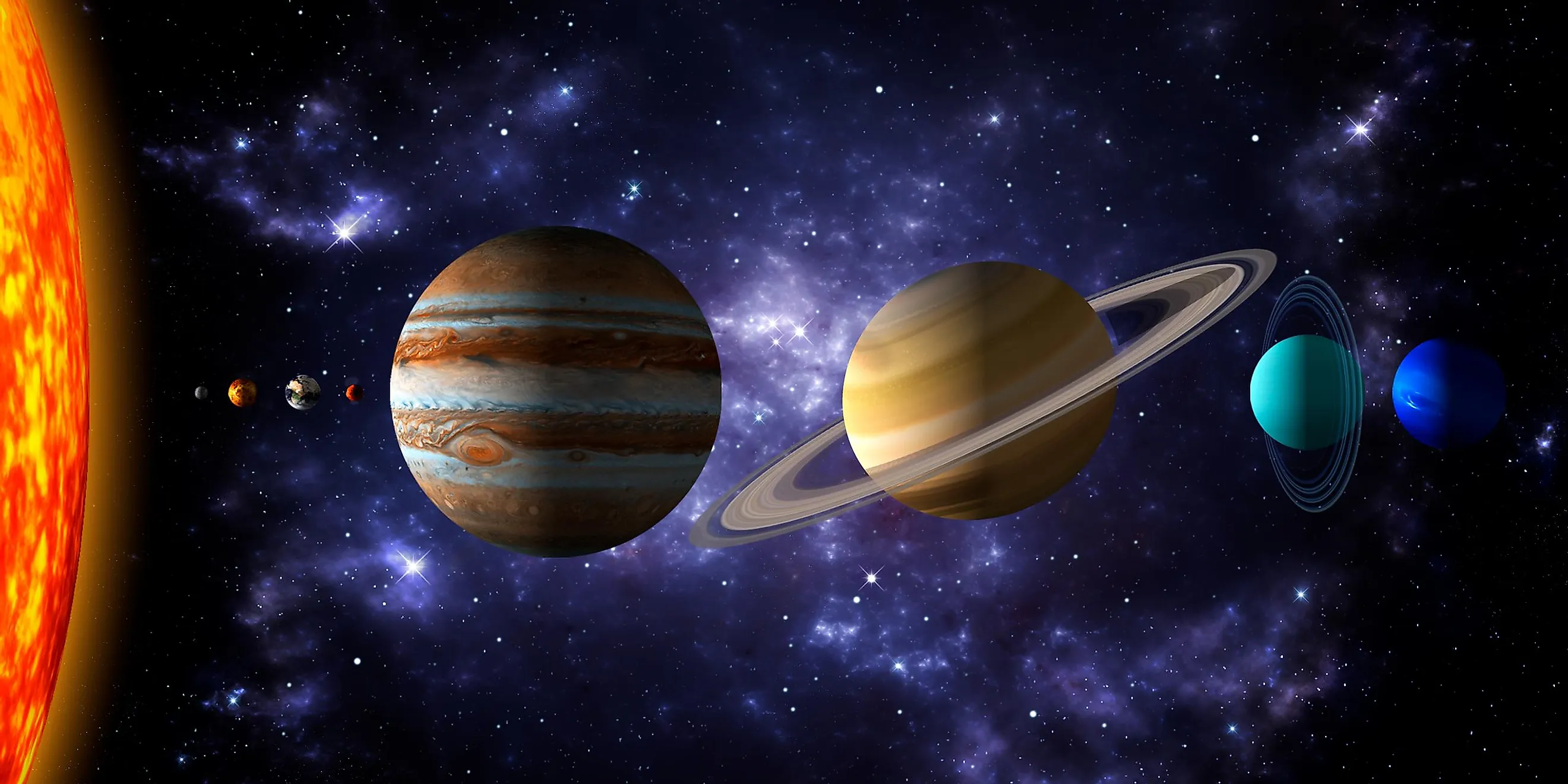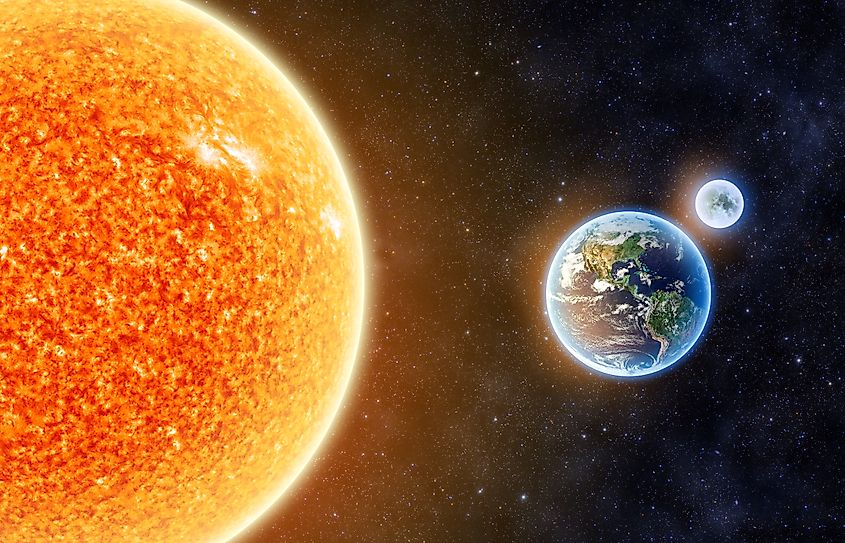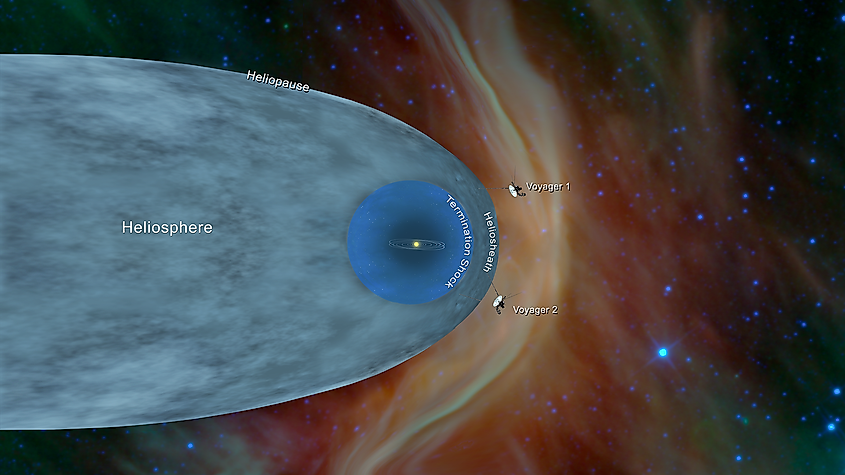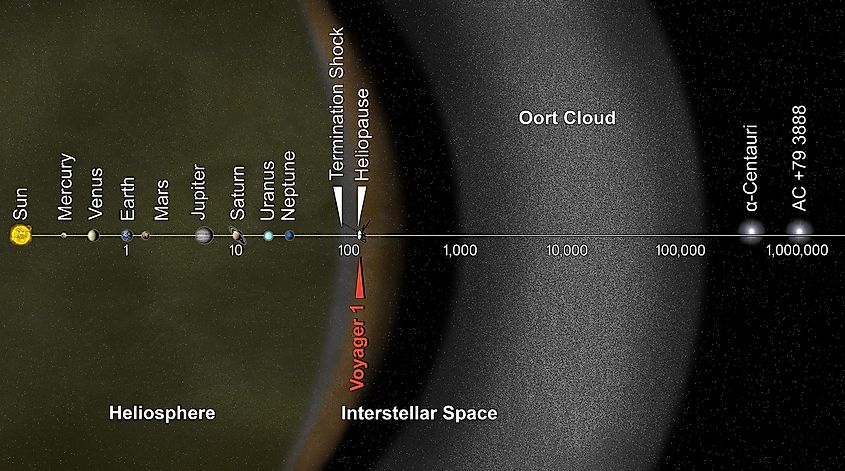
What Is The Heliopause?
The sun is constantly emitting a beam of charged particles called the solar wind. As one might expect, the strength of the solar wind weakens with distance. The closer something is to the sun, the higher the strength of the solar wind. While the solar wind moves outwards towards the outer regions of the solar system, there is also radiation coming into our solar system from interstellar space. The solar wind helps repel radiation from interstellar space, yet since the solar wind grows weaker with distance, there is a boundary where the amount of radiation from interstellar space is stronger than the solar wind, and this boundary is known as the heliopause.
Astronomical Unit

In everyday life, we are used to using units such as feet, miles, meters, kilometres, etc. in astronomy, however, distances become so vast that everyday units of measurement simply produce numbers that are too big. To simplify distances within our solar system, astronomers use what’s called an astronomical unit or AU. One AU is equal to the distance between the sun and Earth, about 93-million miles (150-million kilometres). When something is 100-AU away, that means its distance from us is equal to 100 times the distance between the Earth and sun, or 100 multiplied by 93-million miles.
Cosmic Bubble

The solar wind creates a kind of cosmic bubble that surrounds the entire solar system. This bubble is the outermost layer of the sun, called the heliosphere. Although it is produced by the sun, it extends far beyond the orbits of the outermost planets. If you were to observe the solar system from deep space, and assuming you could see solar radiation, the solar system would appear to be contained with a gigantic bubble of solar radiation. The heliosphere contains a few outer layers located at the edges of the solar system. First there’s the terminal shock, which represents the region where the solar wind slows down to below supersonic speeds. The termination shock is located about 70 to 90-AU away from the sun. Past the termination shock is the heliosheath. It is here where the solar wind continues to slow down and interact with radiation from interstellar space, which causes the solar wind to move chaotically and experience a kind of turbulence. The heliosheath is located approximately 100-AU from the sun.
The Edge Of The Solar System

Beyond the heliosheath is the heliopause. The heliopause is the outermost region of our solar system, and it is the region where the solar wind is overcome by the radiation of interstellar space. In fact, the heliopause is the general agreed upon edge of the solar system, and beyond the heliopause is interstellar space. Although objects do orbit the sun beyond the heliopause, astronomers generally use the heliopause to define the end of the solar system. The heliopause is located 120-AU from the sun, a number that was directly measured by the Voyager 1 spacecraft in 2012. In 2012, the Voyager 1 spacecraft began sending data that showed the amount of solar radiation it was detecting was dropping rapidly, and it was being replaced by interstellar radiation such as cosmic rays. This signified an important moment in the history of space travel, as Voyager 1 became the first human-made object to exit the heliopause, making it the first object to leave the solar system entirely. A few years later in 2018, the Voyager 2 spacecraft became the second human-made object to leave the solar system.











